Adam Rupe
Deep Koopman operator framework for causal discovery in nonlinear dynamical systems
May 20, 2025Abstract:We use a deep Koopman operator-theoretic formalism to develop a novel causal discovery algorithm, Kausal. Causal discovery aims to identify cause-effect mechanisms for better scientific understanding, explainable decision-making, and more accurate modeling. Standard statistical frameworks, such as Granger causality, lack the ability to quantify causal relationships in nonlinear dynamics due to the presence of complex feedback mechanisms, timescale mixing, and nonstationarity. This presents a challenge in studying many real-world systems, such as the Earth's climate. Meanwhile, Koopman operator methods have emerged as a promising tool for approximating nonlinear dynamics in a linear space of observables. In Kausal, we propose to leverage this powerful idea for causal analysis where optimal observables are inferred using deep learning. Causal estimates are then evaluated in a reproducing kernel Hilbert space, and defined as the distance between the marginal dynamics of the effect and the joint dynamics of the cause-effect observables. Our numerical experiments demonstrate Kausal's superior ability in discovering and characterizing causal signals compared to existing approaches of prescribed observables. Lastly, we extend our analysis to observations of El Ni\~no-Southern Oscillation highlighting our algorithm's applicability to real-world phenomena. Our code is available at https://github.com/juannat7/kausal.
Physics-Informed Representation Learning for Emergent Organization in Complex Dynamical Systems
Apr 25, 2023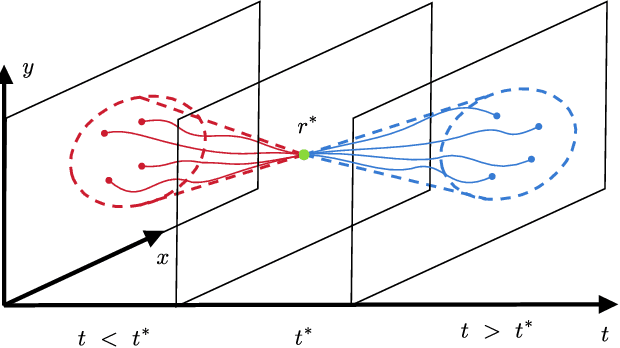
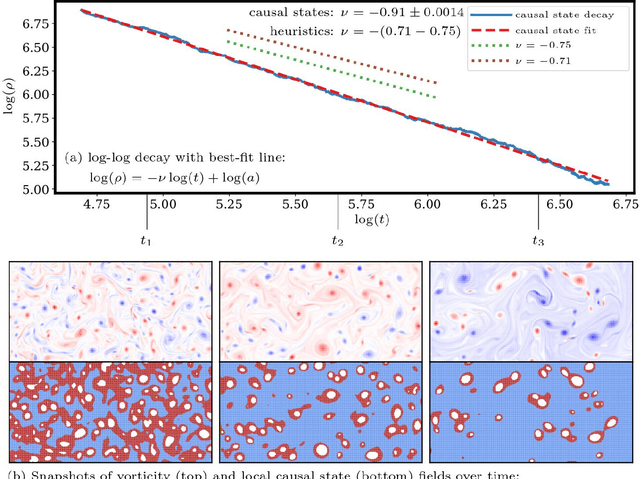
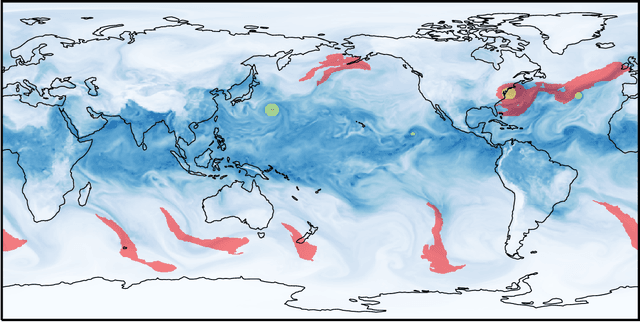
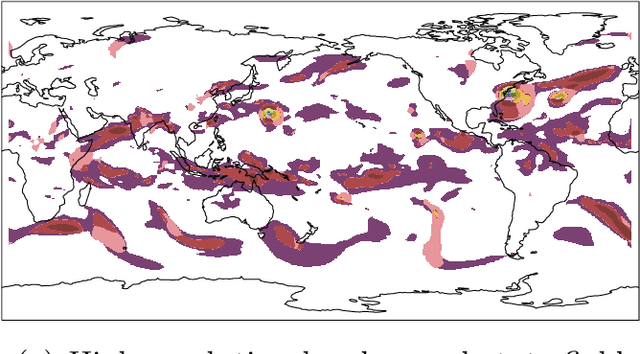
Abstract:Nonlinearly interacting system components often introduce instabilities that generate phenomena with new properties and at different space-time scales than the components. This is known as spontaneous self-organization and is ubiquitous in systems far from thermodynamic equilibrium. We introduce a theoretically-grounded framework for emergent organization that, via data-driven algorithms, is constructive in practice. Its building blocks are spacetime lightcones that capture how information propagates across a system through local interactions. We show that predictive equivalence classes of lightcones, local causal states, capture organized behaviors and coherent structures in complex spatiotemporal systems. Using our unsupervised physics-informed machine learning algorithm and a high-performance computing implementation, we demonstrate the applicability of the local causal states for real-world domain science problems. We show that the local causal states capture vortices and their power-law decay behavior in two-dimensional turbulence. We then show that known (hurricanes and atmospheric rivers) and novel extreme weather events can be identified on a pixel-level basis and tracked through time in high-resolution climate data.
Spacetime Autoencoders Using Local Causal States
Oct 12, 2020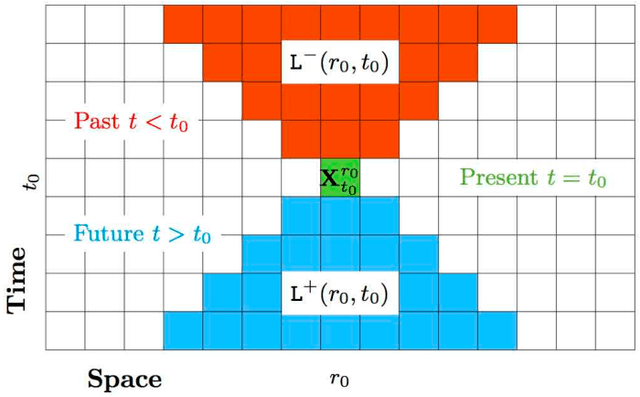

Abstract:Local causal states are latent representations that capture organized pattern and structure in complex spatiotemporal systems. We expand their functionality, framing them as spacetime autoencoders. Previously, they were only considered as maps from observable spacetime fields to latent local causal state fields. Here, we show that there is a stochastic decoding that maps back from the latent fields to observable fields. Furthermore, their Markovian properties define a stochastic dynamic in the latent space. Combined with stochastic decoding, this gives a new method for forecasting spacetime fields.
DisCo: Physics-Based Unsupervised Discovery of Coherent Structures in Spatiotemporal Systems
Sep 25, 2019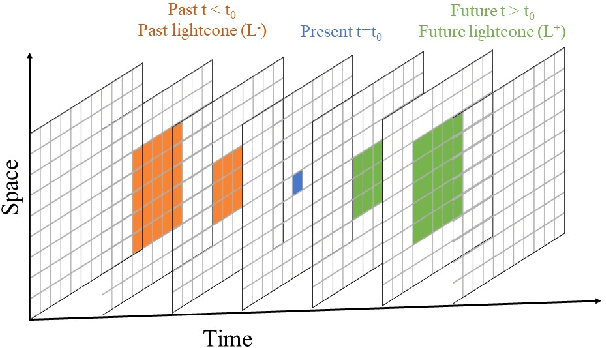
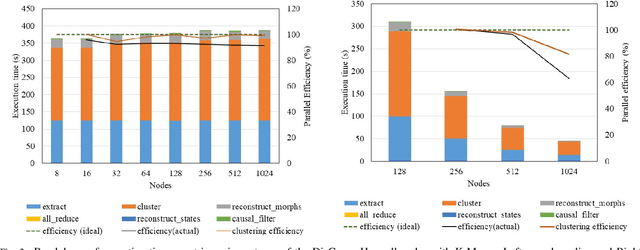
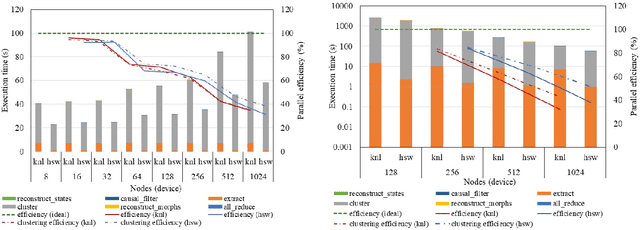
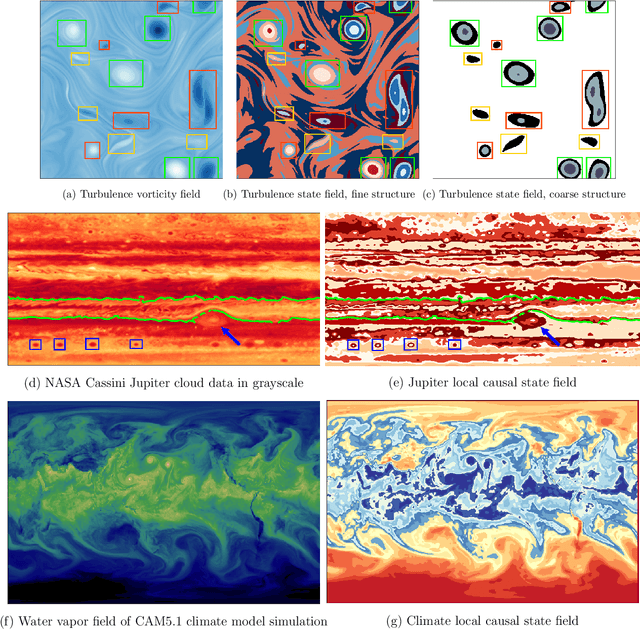
Abstract:Extracting actionable insight from complex unlabeled scientific data is an open challenge and key to unlocking data-driven discovery in science. Complementary and alternative to supervised machine learning approaches, unsupervised physics-based methods based on behavior-driven theories hold great promise. Due to computational limitations, practical application on real-world domain science problems has lagged far behind theoretical development. We present our first step towards bridging this divide - DisCo - a high-performance distributed workflow for the behavior-driven local causal state theory. DisCo provides a scalable unsupervised physics-based representation learning method that decomposes spatiotemporal systems into their structurally relevant components, which are captured by the latent local causal state variables. Complex spatiotemporal systems are generally highly structured and organize around a lower-dimensional skeleton of coherent structures, and in several firsts we demonstrate the efficacy of DisCo in capturing such structures from observational and simulated scientific data. To the best of our knowledge, DisCo is also the first application software developed entirely in Python to scale to over 1000 machine nodes, providing good performance along with ensuring domain scientists' productivity. We developed scalable, performant methods optimized for Intel many-core processors that will be upstreamed to open-source Python library packages. Our capstone experiment, using newly developed DisCo workflow and libraries, performs unsupervised spacetime segmentation analysis of CAM5.1 climate simulation data, processing an unprecedented 89.5 TB in 6.6 minutes end-to-end using 1024 Intel Haswell nodes on the Cori supercomputer obtaining 91% weak-scaling and 64% strong-scaling efficiency.
Towards Unsupervised Segmentation of Extreme Weather Events
Sep 16, 2019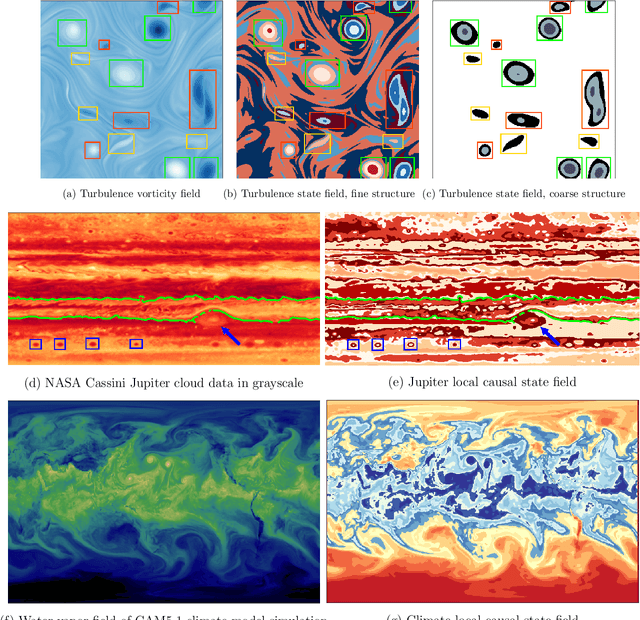
Abstract:Extreme weather is one of the main mechanisms through which climate change will directly impact human society. Coping with such change as a global community requires markedly improved understanding of how global warming drives extreme weather events. While alternative climate scenarios can be simulated using sophisticated models, identifying extreme weather events in these simulations requires automation due to the vast amounts of complex high-dimensional data produced. Atmospheric dynamics, and hydrodynamic flows more generally, are highly structured and largely organize around a lower dimensional skeleton of coherent structures. Indeed, extreme weather events are a special case of more general hydrodynamic coherent structures. We present a scalable physics-based representation learning method that decomposes spatiotemporal systems into their structurally relevant components, which are captured by latent variables known as local causal states. For complex fluid flows we show our method is capable of capturing known coherent structures, and with promising segmentation results on CAM5.1 water vapor data we outline the path to extreme weather identification from unlabeled climate model simulation data.
Local Causal States and Discrete Coherent Structures
Jan 01, 2018



Abstract:Coherent structures form spontaneously in nonlinear spatiotemporal systems and are found at all spatial scales in natural phenomena from laboratory hydrodynamic flows and chemical reactions to ocean, atmosphere, and planetary climate dynamics. Phenomenologically, they appear as key components that organize the macroscopic behaviors in such systems. Despite a century of effort, they have eluded rigorous analysis and empirical prediction, with progress being made only recently. As a step in this, we present a formal theory of coherent structures in fully-discrete dynamical field theories. It builds on the notion of structure introduced by computational mechanics, generalizing it to a local spatiotemporal setting. The analysis' main tool employs the \localstates, which are used to uncover a system's hidden spatiotemporal symmetries and which identify coherent structures as spatially-localized deviations from those symmetries. The approach is behavior-driven in the sense that it does not rely on directly analyzing spatiotemporal equations of motion, rather it considers only the spatiotemporal fields a system generates. As such, it offers an unsupervised approach to discover and describe coherent structures. We illustrate the approach by analyzing coherent structures generated by elementary cellular automata, comparing the results with an earlier, dynamic-invariant-set approach that decomposes fields into domains, particles, and particle interactions.
 Add to Chrome
Add to Chrome Add to Firefox
Add to Firefox Add to Edge
Add to Edge